Thingiverse
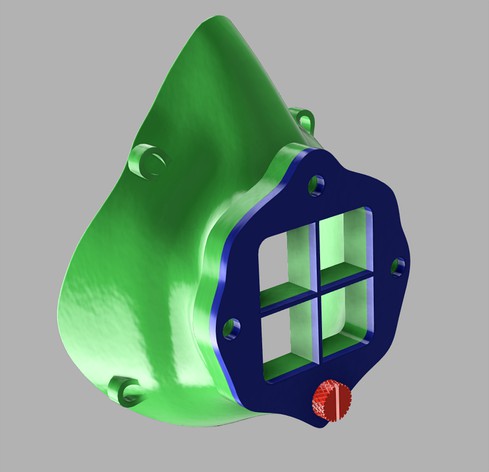
Emergency First Responders COVID 19 face mask / respirator. Extends use of N95 masks by ian99rt
by Thingiverse
Last crawled date: 4 years, 1 month ago
UPDATE: I've added a +1mm and +2mm in case you need to stack materials and it gets too thick. I'd also suggest printing the screws at 100% infill and I've gotten some feedback that they broke when over tightening (this is only to make them stronger, not gorilla proof)
I've taken the liberty of improving the open-source design released by Dr. Zaugg recently for 3D printing a mask that uses a 2"x2" piece of filter material (they're saying they can use a single N95 mask to make 4+ filters for the reusable 3D printed parts. Designed to use a relatively wide variety of filter materials (sandwich plate has an energy concentrator to provide a concentrated sealing ring).
Dr. Zaugg's website for reference: https://longliveyoursmile.com/3d-printable-mask-for-covid-19/
The original design did not lend itself to a few things: 1) Push a square block thru a square hole makes it difficult to have the correct thickness of material and no a guaranteed seal. 2) strap attachments too close to edge to allow for putting a slit piece of tubing on or rubber seal.3) No terribly good way to know how to scale for your specific face.
I'm working with Dr. Zaugg's office to try and get these files post as well.
I've also included a printable scale ruler to measure your face (see a photo of my favorite theoretical physicist how to measure). Simply measure from bridge of nose to point of chin, and read off the scale readout. This is how much you need to scale all the 3d printed parts. Since we're on lock down I could only use myself and my wife to create the scale of what fits so hopefully it works for you.
If you have a pair of calipers or fine metric ruler on hand you can also find scale by this formula: y(x)% = 0.6061 * x + 26.364 where x is mm measurement of face.
Being printed in ridged material makes it hard to make a mask that fits everyone's face. If the mask fits your nose and chin area correctly you can use a hair dryer to thermo-form the ill fitting areas to your specific face profile (why i'd suggest printing in PLA).
Thumb screw's threaded area is the only part that need to be printed at a finer layer height (I'm printing with variable layer height at 0.07mm via PrusaSlicer).
UPDATE: I had an issue with the male screw thread working when switching materials, I found reducing the screw's scale by 2 to 3% made them work perfectly.
Other then the 3d printed parts the assembly will need:
Qty. 1, 2"x2" flat(ish) filter media (this piece gets sandwiched between the mask and the sandwich plate and clamped with the 4 3d printed thumb screws)
Qty. 2, 6-8" elastic bands (I was thinking reusing the elastic from N95 or surgeon masks, rubber bands in a pinch).
I've taken the liberty of improving the open-source design released by Dr. Zaugg recently for 3D printing a mask that uses a 2"x2" piece of filter material (they're saying they can use a single N95 mask to make 4+ filters for the reusable 3D printed parts. Designed to use a relatively wide variety of filter materials (sandwich plate has an energy concentrator to provide a concentrated sealing ring).
Dr. Zaugg's website for reference: https://longliveyoursmile.com/3d-printable-mask-for-covid-19/
The original design did not lend itself to a few things: 1) Push a square block thru a square hole makes it difficult to have the correct thickness of material and no a guaranteed seal. 2) strap attachments too close to edge to allow for putting a slit piece of tubing on or rubber seal.3) No terribly good way to know how to scale for your specific face.
I'm working with Dr. Zaugg's office to try and get these files post as well.
I've also included a printable scale ruler to measure your face (see a photo of my favorite theoretical physicist how to measure). Simply measure from bridge of nose to point of chin, and read off the scale readout. This is how much you need to scale all the 3d printed parts. Since we're on lock down I could only use myself and my wife to create the scale of what fits so hopefully it works for you.
If you have a pair of calipers or fine metric ruler on hand you can also find scale by this formula: y(x)% = 0.6061 * x + 26.364 where x is mm measurement of face.
Being printed in ridged material makes it hard to make a mask that fits everyone's face. If the mask fits your nose and chin area correctly you can use a hair dryer to thermo-form the ill fitting areas to your specific face profile (why i'd suggest printing in PLA).
Thumb screw's threaded area is the only part that need to be printed at a finer layer height (I'm printing with variable layer height at 0.07mm via PrusaSlicer).
UPDATE: I had an issue with the male screw thread working when switching materials, I found reducing the screw's scale by 2 to 3% made them work perfectly.
Other then the 3d printed parts the assembly will need:
Qty. 1, 2"x2" flat(ish) filter media (this piece gets sandwiched between the mask and the sandwich plate and clamped with the 4 3d printed thumb screws)
Qty. 2, 6-8" elastic bands (I was thinking reusing the elastic from N95 or surgeon masks, rubber bands in a pinch).
Similar models
thingiverse
free

Montana Mask Utah Edit by michaelmplatt
...ch diameter filter over the hole, secure it in place with the filter retention body, and screw on the cap to create a tight seal.
thingiverse
free

Montana Mask and Filter Holder by nerdpants
... pla with 4 perimeters and 15% infill.
no support needed
these things work pretty good...not sure i'd stake my life on it tho
thingiverse
free

Respirator/face mask by willet12
...vent cap" at a 36.5mm diameter at the x + y axis or they will not fit in the holes. i used cotton pads for filters in these.
thingiverse
free

Corona virus mask Covid-19 by ahanusa1
...are a couple of other people who are making similar masks and a united idea.https://docs.google.com/document/d/1usyf8_de6bfcscqwxhlpoabxp60qg1fvnaedbqzmuwo/edit cleaning tips from the...
thingiverse
free

COVID-19 Mask with Reusable Filter by DanTheBurgerMan
...ask within the day on my thingiverse profile. its my intention that the seal strip will be printed from tpu. stay tuned for that!
thingiverse
free

Industrial N95 Prefilter Adapter For 3D Printed Respirator by rokemronnie
...mount, allowing you to continue to use the printed anti-microbial disc that's part of copper3d's design and the variants.
grabcad
free

Covid-19 N95 FFP2 Filter Face Mask by VOODOO Bionics
...ommunity project. feel free to use this design as a base for something better!
get in touch with voodoo bionics.
@voodoobionics
thingiverse
free

COVID-19 Face Mask by YottaGreg
...the pictures. test the elastic band to see if it can pull back and forth so that a person can adjust the tightness on their head.
thingiverse
free

HOME Filter Modular Mask no Supports n95 HEPA MERV by vendevil
...4256265
coming improvements
flexible printed seal
better moisture protection for the intake
desiccant holder in the breath guard
thingiverse
free

Face Mask by jparrajr
... work force" specifically grocery clerks. they deal with just about everyone in a community and are lacking the proper ppe.
Ian99Rt
thingiverse
free

Bundled up Bernie by ian99rt
...m to the chair legs be prusaslicer 2.3 with support wasn't attaching the brim to the chair feet and detached during printing.
thingiverse
free

3030 Extrusion End Cap, easy to install / remove by ian99rt
...se
wanted an endcap that had the same radii and profile as the extrusion. wanted it relatively easy to install / remove as well.
thingiverse
free

4 Cube Retraction Calibration by ian99rt
...f retraction and 30mm/sec.
i then iterated until i reached 4.0 mm of retraction and 55 mm/sec and has been working awesome since.
thingiverse
free

Mad Max War Boys Stencil by ian99rt
...nted stencil to hold all the inner pieces in places for painting.
note: stl is in inches, multiply by 25.4 for mm or 2540% scale.
thingiverse
free

Prusa i3 LCD Open Hardware Gear Knob by ian99rt
... size as r01 felt a little too small.
i printed at 100% size and 98% to find a better fit onto the shaft and 98% was the winner.
thingiverse
free

Deltaprintr Hotend Retainer with wire pass thru by ian99rt
...i had an issue with the retained getting pushed up by the wires so i printed a retaining clip as well (hotend_retainer_clip.stl).
thingiverse
free

Cable Managment for Prusa I3 Haribo 3030 Frame by ian99rt
...qty. 2: ribbon_cable_clips (i had a lot of slack in the ribbon cable so i double folded them over to take up the slack).
thingiverse
free

Deltaprintr Filament Guide for Extended Extruder Arm by ian99rt
...rint with brim as the cylindrical guide's lower surface is very narrow, and support for arch if you have inadequate cooling.
thingiverse
free

OpenWheeler Gen 2 5 Degree Seat Wedge by ian99rt
...er thing required are 2x 8mmx75mm bolts to account for the longer length needed at the front rails-seat frame attachment points.
thingiverse
free
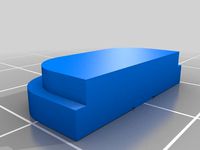
Glock Armorer Inspection Slide Cover Gen 1 thru Gen 4 by ian99rt
...te to view the trigger bar and striker engagement.
printed solid esun petg and worked as intended on a gen 4 g19 and gen 3 g34.
N95
turbosquid
free

N95 Mask
...ee 3d model n95 mask for download as max, blend, fbx, and obj on turbosquid: 3d models for games, architecture, videos. (1535320)
turbosquid
free

Mask N95
... free 3d model mask n95 for download as ma, fbx, obj, and png on turbosquid: 3d models for games, architecture, videos. (1574740)
turbosquid
$20

n95-tex.max
... available on turbo squid, the world's leading provider of digital 3d models for visualization, films, television, and games.
3d_export
free

n95 mask machine
...n95 mask machine
3dexport
n95 mask machine corona virus industrial 3d 3dmodel cg free pack collection
3d_export
$10

Nokia N95 3D Model
...d model
3dexport
nokia n95 smart mobile phone communications hand held gadget cellular
nokia n95 3d model elitesky 19815 3dexport
turbosquid
$79

Nokia N95 8Gb
... available on turbo squid, the world's leading provider of digital 3d models for visualization, films, television, and games.
turbosquid
free

Nokia N95 not finished
... available on turbo squid, the world's leading provider of digital 3d models for visualization, films, television, and games.
3d_export
$27
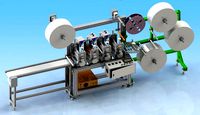
n95 full servo driven mask printer
...n95 full servo driven mask printer
3dexport
n95 full servo driven mask printer
turbosquid
$59

N95 mask sealing machine
...ling machine for download as max, ige, 3ds, dxf, fbx, and obj on turbosquid: 3d models for games, architecture, videos. (1594843)
3d_export
$7

n95 core 4-piece cad pdf
...n95 core 4-piece cad pdf
3dexport
n95 core 4-piece 3d model + cad + pdf3d model
Respirator
turbosquid
$21

Gas mask respirator respirator respirator
...irator respirator respirator for download as ma, obj, and fbx on turbosquid: 3d models for games, architecture, videos. (1606334)
3d_export
$7

mask respirator
...mask respirator
3dexport
3d respirator mask
turbosquid
$30

Cartoon medical respirator
... cartoon medical respirator for download as max, fbx, and obj on turbosquid: 3d models for games, architecture, videos. (1667655)
turbosquid
$16

Gas mask respirator
...model 3d gas mask respirator for download as ma, obj, and fbx on turbosquid: 3d models for games, architecture, videos. (1612216)
turbosquid
$21

Gas mask respirator
...or scifi futuristic 3d model for download as ma, fbx, and obj on turbosquid: 3d models for games, architecture, videos. (1609213)
3d_export
$5

3d artificial respirator
...3d artificial respirator
3dexport
artificial ventilator, simple version without back connections
turbosquid
$21

Gas mask respirator scifi
...3d model gas mask respirator scifi for download as ma and obj on turbosquid: 3d models for games, architecture, videos. (1605093)
turbosquid
$24

Gas mask respirator helmet
...l gas mask respirator helmet for download as ma, fbx, and obj on turbosquid: 3d models for games, architecture, videos. (1581755)
turbosquid
$23

Gas mask respirator scifi
...el gas mask respirator scifi for download as ma, obj, and fbx on turbosquid: 3d models for games, architecture, videos. (1604278)
turbosquid
$22

Gas mask respirator scifi
...el gas mask respirator scifi for download as ma, obj, and fbx on turbosquid: 3d models for games, architecture, videos. (1605729)
Responders
3d_export
$5
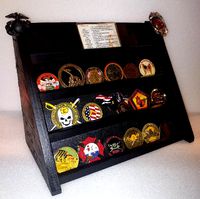
military and first responder challenge coin holder
...ore than 20% infill when slicing. great gift idea for those in the coin collecting community. ability to make as big as you want!
3d_export
$129

pick-up f-150 police responder 2021
...polycount: without meshsmooth max,obj,lwo,c4d, blend: 420 000 polygons collapsed fbx,3ds,obj: 5 950 000 faces/ 3 350 000 polygons
3d_export
free

Barrier
...9;s per print report all problems to me at hwelter09@gmail.com make the topic 3d model #2 and i will respond as soon as possible
3d_export
$20

skull ring
...cording to the specifications you mentioned. if you want this participation, i am looking forward to your respond. sincerely neel
3d_export
$30
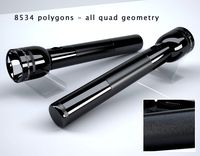
Realistic Flashlight Model Texture AD Material 3D Model
...quipment fire first responder battery linterna torch
realistic flashlight model texture ad material 3d model cgidx 54288 3dexport
3ddd
$1

Cappellini wooden lounge chair
...le on site doesn`t respond real object proportions.
i also attached old version of this chair made from the measurements on site.
3d_export
$89

ninja 0001
...todesk fbx (.fbx) polygons: 17247 vertices: 9188 texture: jpg for any questions, please contact us and we'll respond quickly.
3d_export
$129

Subway Station
...ices: 150388 texture: png materials: yes, v-ray material only for any questions, please contact us and we'll respond quickly.
3d_export
$69

police officer 0016
...) polygons: 76837 vertices: 47182 texture: png materials: yes for any questions, please contact us and we'll respond quickly.
3d_export
$69

police officer 0010
...) polygons: 65541 vertices: 35073 texture: png materials: yes for any questions, please contact us and we'll respond quickly.
Covid
turbosquid
$6

covid
...d
turbosquid
royalty free 3d model covid for download as max on turbosquid: 3d models for games, architecture, videos. (1667862)
3d_export
$50
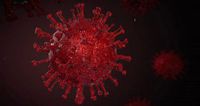
covid-19
...covid-19
3dexport
3d obj model. covid-19
3d_export
$11

covid-19
...covid-19
3dexport
this is 3d model about covid-19 virus
3d_export
$10
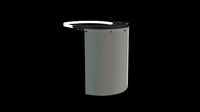
covid 3d mask
...covid 3d mask
3dexport
3d covid mask for 3d avatars to implement in covid information projects
3d_export
$5

covid-19 korona
...covid-19 korona
3dexport
covid-19
3d_export
$8

coronavirus covid-19
...coronavirus covid-19
3dexport
coronavirus covid-19
3d_export
$5

covid mask black
...covid mask black
3dexport
black covid mask
3d_export
$5
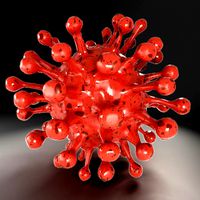
coronavirus covid-19
...coronavirus covid-19
3dexport
coronavirus covid-19
turbosquid
$29

Covid Collection
...quid
royalty free 3d model covid collection for download as on turbosquid: 3d models for games, architecture, videos. (1682309)
3d_export
$5
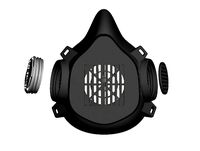
mask covid-19
...mask covid-19
3dexport
covid-19 virus protection mask
Emergency
turbosquid
$1

Emergency Phone
...
royalty free 3d model emergency phone for download as blend on turbosquid: 3d models for games, architecture, videos. (1303752)
turbosquid
free

Emergency Stairs
...d
free 3d model emergency stairs for download as obj and fbx on turbosquid: 3d models for games, architecture, videos. (1630838)
turbosquid
$39
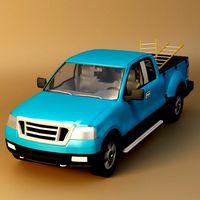
Emergency vehicle
...ty free 3d model emergency vehicle for download as ma and max on turbosquid: 3d models for games, architecture, videos. (1418276)
turbosquid
$20

emergancy torch
...y free 3d model emergancy torch for download as 3ds and blend on turbosquid: 3d models for games, architecture, videos. (1299075)
turbosquid
$4
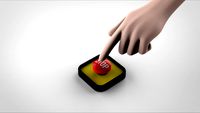
emergency button
...ty free 3d model emergency button for download as 3dm and max on turbosquid: 3d models for games, architecture, videos. (1670061)
turbosquid
free

Emergency button
...e 3d model emergency button for download as max, obj, and fbx on turbosquid: 3d models for games, architecture, videos. (1326689)
turbosquid
$35

Emergency bridge
...model emergency bridge for download as 3ds, obj, 3dm, and skp on turbosquid: 3d models for games, architecture, videos. (1217332)
turbosquid
$29

emergency man
... available on turbo squid, the world's leading provider of digital 3d models for visualization, films, television, and games.
turbosquid
$25

Emergency Phone
... available on turbo squid, the world's leading provider of digital 3d models for visualization, films, television, and games.
turbosquid
$16
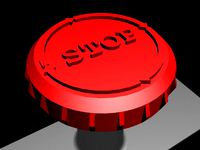
emergency stop.max
... available on turbo squid, the world's leading provider of digital 3d models for visualization, films, television, and games.
Extends
turbosquid
$39
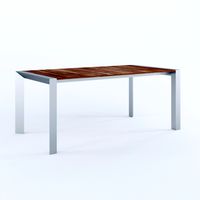
Extending table
...id
royalty free 3d model extending table for download as max on turbosquid: 3d models for games, architecture, videos. (1290552)
turbosquid
$5
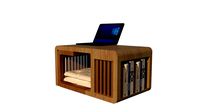
Extend Table
...squid
royalty free 3d model extend table for download as skp on turbosquid: 3d models for games, architecture, videos. (1372508)
turbosquid
$40

Engine Extended
... available on turbo squid, the world's leading provider of digital 3d models for visualization, films, television, and games.
turbosquid
$12

Triple extender
... available on turbo squid, the world's leading provider of digital 3d models for visualization, films, television, and games.
turbosquid
$99
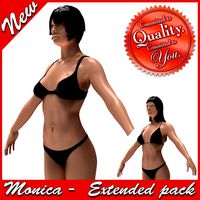
Monica (Extended Pack)
... available on turbo squid, the world's leading provider of digital 3d models for visualization, films, television, and games.
turbosquid
$19

Berlino Extendable Table
... available on turbo squid, the world's leading provider of digital 3d models for visualization, films, television, and games.
turbosquid
$3
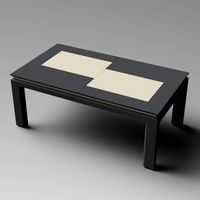
Extendable Modern Table
... available on turbo squid, the world's leading provider of digital 3d models for visualization, films, television, and games.
3d_export
$32
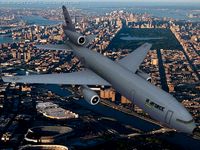
KC10 Extender 3D Model
...c 10 aircraft jet fighter bomber close support interceptor spy attacker plane
kc10 extender 3d model martialartist 24527 3dexport
3d_export
$50

Extended Range Trailer 3D Model
...railer 3d model
3dexport
extended range trailer military patrol equipment
extended range trailer 3d model dougmavs 75684 3dexport
design_connected
$13

Big Dining Tables Extended
...ining tables extended
designconnected
bonaldo big dining tables extended computer generated 3d model. designed by gilles, alain.
Masks
turbosquid
$1

Dust Mask Medical Mask Face Mask Surgical Mask
...k face mask surgical mask for download as blend, fbx, and obj on turbosquid: 3d models for games, architecture, videos. (1533329)
3d_export
$5
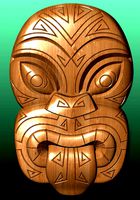
Mask
...mask
3dexport
african mask
turbosquid
$2
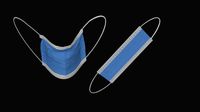
Riggged Surgical mask face mask dust mask medical mask
...sk dust mask medical mask for download as blend, fbx, and obj on turbosquid: 3d models for games, architecture, videos. (1536257)
archibase_planet
free

Mask
...mask
archibase planet
mask sculpture decor
mask - 3d model for interior 3d visualization.
3d_export
$19
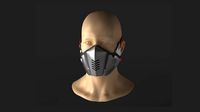
masks tech metal masks wearable futuristic masks
... tech metal masks wearable futuristic masks
3dexport
masks, tech metal masks, wearable, futuristic masks zip contain fbx obj max
archibase_planet
free
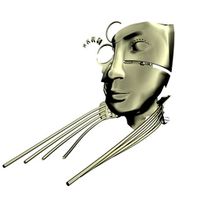
Mask
...mask
archibase planet
mask sculpture decor
mask-decor - 3d model for interior 3d visualization.
archibase_planet
free
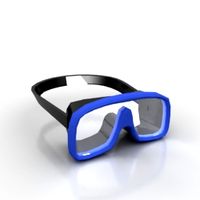
Mask
...mask
archibase planet
mask
swimming mask - 3d model (*.gsm+*.3ds) for interior 3d visualization.
archibase_planet
free

Mask
...mask
archibase planet
picturesque element mask
mask n050608 - 3d model (*.gsm+*.3ds) for interior 3d visualization.
archibase_planet
free
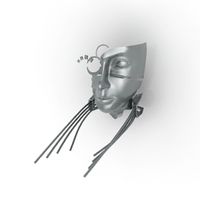
Mask
...mask
archibase planet
mask picturesque element
mask n230708 - 3d model (*.gsm+*.3ds) for interior 3d visualization.
archibase_planet
free
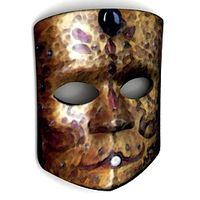
Mask
...mask
archibase planet
mask ornament decoration
mask decor n240211 - 3d model (*.gsm+*.3ds) for interior 3d visualization.
Mask
turbosquid
$1

Dust Mask Medical Mask Face Mask Surgical Mask
...k face mask surgical mask for download as blend, fbx, and obj on turbosquid: 3d models for games, architecture, videos. (1533329)
3d_export
$5

Mask
...mask
3dexport
african mask
turbosquid
$2

Riggged Surgical mask face mask dust mask medical mask
...sk dust mask medical mask for download as blend, fbx, and obj on turbosquid: 3d models for games, architecture, videos. (1536257)
archibase_planet
free

Mask
...mask
archibase planet
mask sculpture decor
mask - 3d model for interior 3d visualization.
3d_export
$19

masks tech metal masks wearable futuristic masks
... tech metal masks wearable futuristic masks
3dexport
masks, tech metal masks, wearable, futuristic masks zip contain fbx obj max
archibase_planet
free

Mask
...mask
archibase planet
mask sculpture decor
mask-decor - 3d model for interior 3d visualization.
archibase_planet
free

Mask
...mask
archibase planet
mask
swimming mask - 3d model (*.gsm+*.3ds) for interior 3d visualization.
archibase_planet
free

Mask
...mask
archibase planet
picturesque element mask
mask n050608 - 3d model (*.gsm+*.3ds) for interior 3d visualization.
archibase_planet
free

Mask
...mask
archibase planet
mask picturesque element
mask n230708 - 3d model (*.gsm+*.3ds) for interior 3d visualization.
archibase_planet
free

Mask
...mask
archibase planet
mask ornament decoration
mask decor n240211 - 3d model (*.gsm+*.3ds) for interior 3d visualization.
19
3d_export
$15
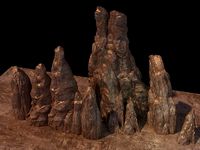
rocks 19
...rocks 19
3dexport
rocks 3d model 19
3d_export
$50

covid-19
...covid-19
3dexport
3d obj model. covid-19
3ddd
$1

PLANTS 19
...plants 19
3ddd
цветок , горшок
plants 19.. enjoy
3d_export
$11

covid-19
...covid-19
3dexport
this is 3d model about covid-19 virus
turbosquid
$25

COVID-19 coronavirus-19 virus microorganism
...virus-19 virus microorganism for download as ma, fbx, and obj on turbosquid: 3d models for games, architecture, videos. (1598091)
3ddd
$1
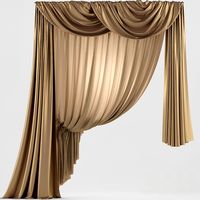
Curtains 19
...curtains 19
3ddd
ламбрекен
curtains 19
other models:http://3ddd.ru/users/brast/models
3d_export
$5

covid-19 korona
...covid-19 korona
3dexport
covid-19
3d_export
$6

tap-19
...tap-19
3dexport
3d_export
$8

coronavirus covid-19
...coronavirus covid-19
3dexport
coronavirus covid-19
3d_export
$5

coronavirus covid-19
...coronavirus covid-19
3dexport
coronavirus covid-19
Face
turbosquid
$100

face a face
... available on turbo squid, the world's leading provider of digital 3d models for visualization, films, television, and games.
turbosquid
$6

Face To Face Swing
... available on turbo squid, the world's leading provider of digital 3d models for visualization, films, television, and games.
3ddd
$1
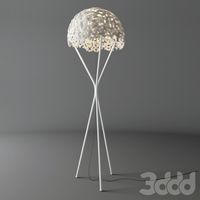
Almerich Face to Face
... гибкостью материала, прозрачностью и тактом, чтобы создавать игры со светом и тенью.
размеры: 48 x 48 x 155 см
полигоны: 39 376
design_connected
$11
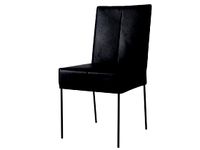
Face
...face
designconnected
montis face chairs computer generated 3d model. designed by gerard van den berg.
turbosquid
$15
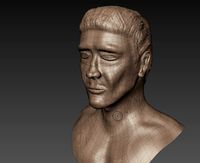
Face
...ce
turbosquid
royalty free 3d model face for download as mud on turbosquid: 3d models for games, architecture, videos. (1178369)
turbosquid
$6
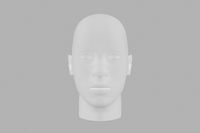
Face
...ce
turbosquid
royalty free 3d model face for download as max on turbosquid: 3d models for games, architecture, videos. (1409756)
turbosquid
$1
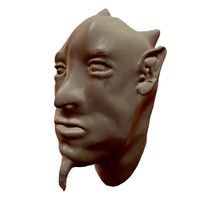
Face
...uid
royalty free 3d model face for download as obj and blend on turbosquid: 3d models for games, architecture, videos. (1288500)
turbosquid
$150
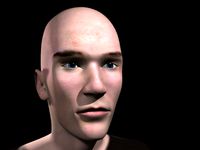
Face
... available on turbo squid, the world's leading provider of digital 3d models for visualization, films, television, and games.
turbosquid
$50

face
... available on turbo squid, the world's leading provider of digital 3d models for visualization, films, television, and games.
turbosquid
$15

Face
... available on turbo squid, the world's leading provider of digital 3d models for visualization, films, television, and games.
First
turbosquid
free

First
... available on turbo squid, the world's leading provider of digital 3d models for visualization, films, television, and games.
design_connected
$16
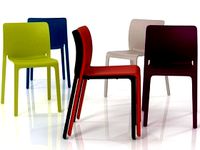
Chair First
...chair first
designconnected
magis chair first computer generated 3d model. designed by giovannoni, stefano.
design_connected
$13

Table First
...table first
designconnected
magis table first computer generated 3d model. designed by giovannoni, stefano.
turbosquid
$3

First Character
...squid
royalty free 3d model first character for download as on turbosquid: 3d models for games, architecture, videos. (1498951)
turbosquid
$39

Egg First
...
royalty free 3d model egg first for download as max and fbx on turbosquid: 3d models for games, architecture, videos. (1207383)
turbosquid
$20

First Win
...
royalty free 3d model first win for download as max and fbx on turbosquid: 3d models for games, architecture, videos. (1440117)
turbosquid
$39
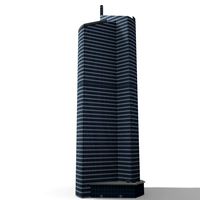
Tour First
...ee 3d model tour first for download as 3ds, max, obj, and fbx on turbosquid: 3d models for games, architecture, videos. (1313928)
turbosquid
$3

first aid
... available on turbo squid, the world's leading provider of digital 3d models for visualization, films, television, and games.
turbosquid
$3
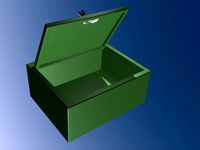
First Aid
... available on turbo squid, the world's leading provider of digital 3d models for visualization, films, television, and games.
turbosquid
free

First Aid
... available on turbo squid, the world's leading provider of digital 3d models for visualization, films, television, and games.
Use
3ddd
$1

US flag
...us flag
3ddd
флаг
us flag
3d_export
free

Among us
...among us
3dexport
among us red
3d_export
free
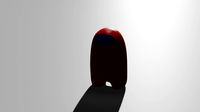
Among Us
...character from the game "among us". it can be use as a toy or...
3d_export
$6
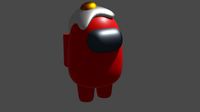
among us
...among us
3dexport
doll from among us in red
3d_export
$5

amoung us
...amoung us
3dexport
amoung us character. was created by cinema 4d 19
3d_export
$5
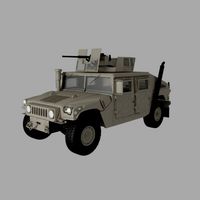
Humvee us
...humvee us
3dexport
humvee us 3d model good quality for animation
3d_export
$15

among us
...among us 3dexport turbosmooth modifier can be use to increase mesh resolution if...
3d_export
$25
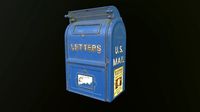
mailbox us
...mailbox us
3dexport
low poly model mailbox us. modeling in the blender, texturing in substance painter
design_connected
$13
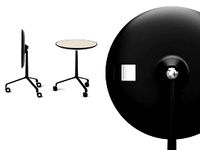
Use Me
...use me
designconnected
sitland use me computer generated 3d model. designed by paolo scagnellato.
3d_export
$5
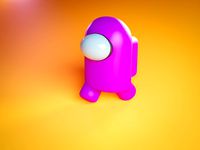
Among Us
...rt
the among us model comes in a variety of colors that can be customized by anyone, and even works with little in the animation
